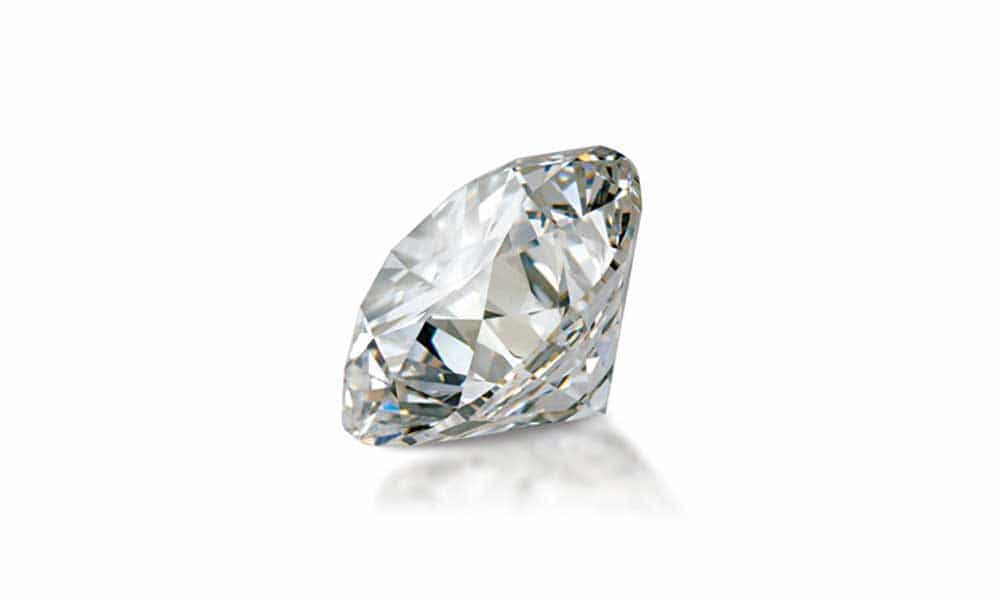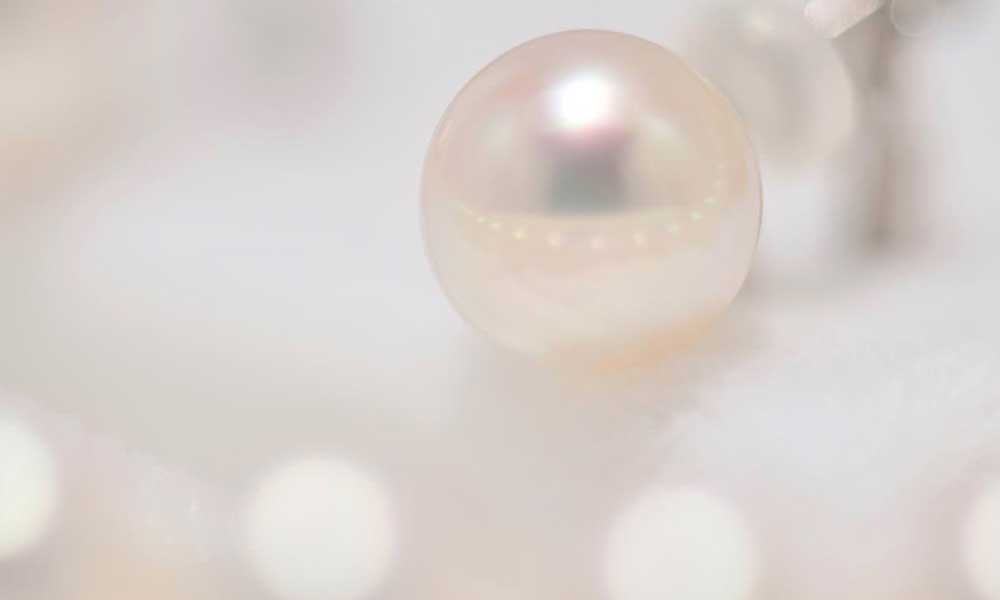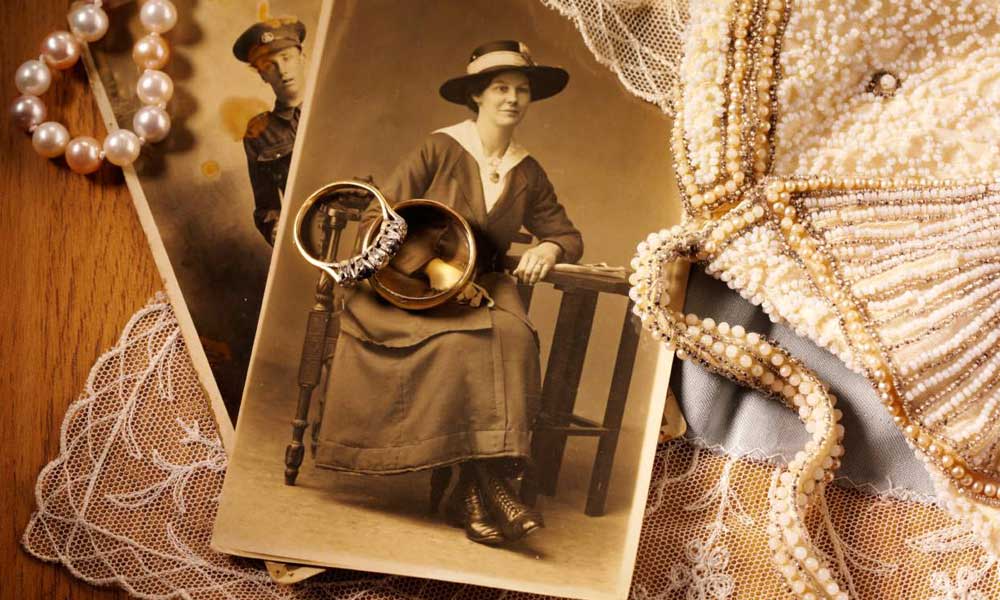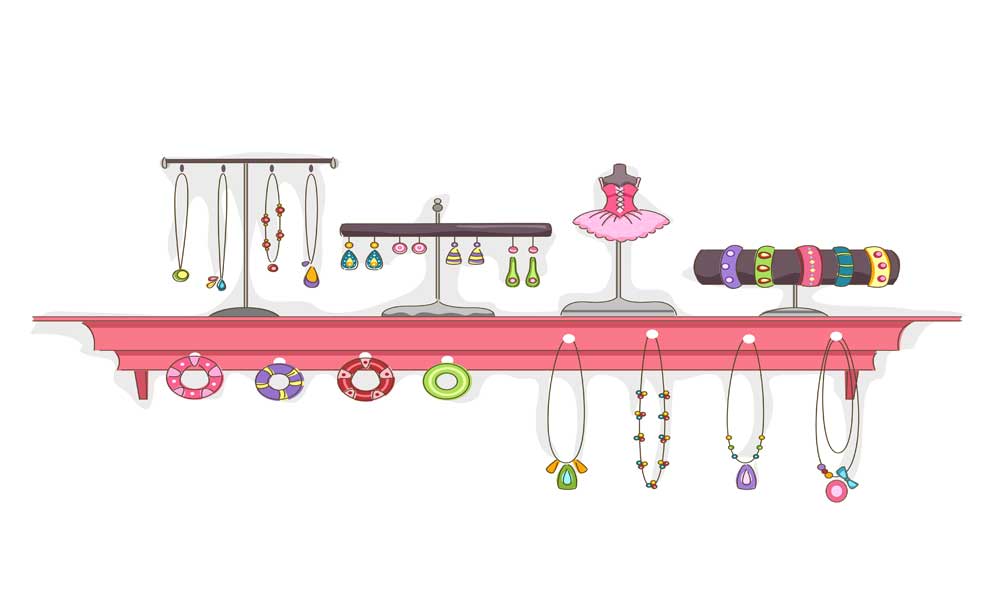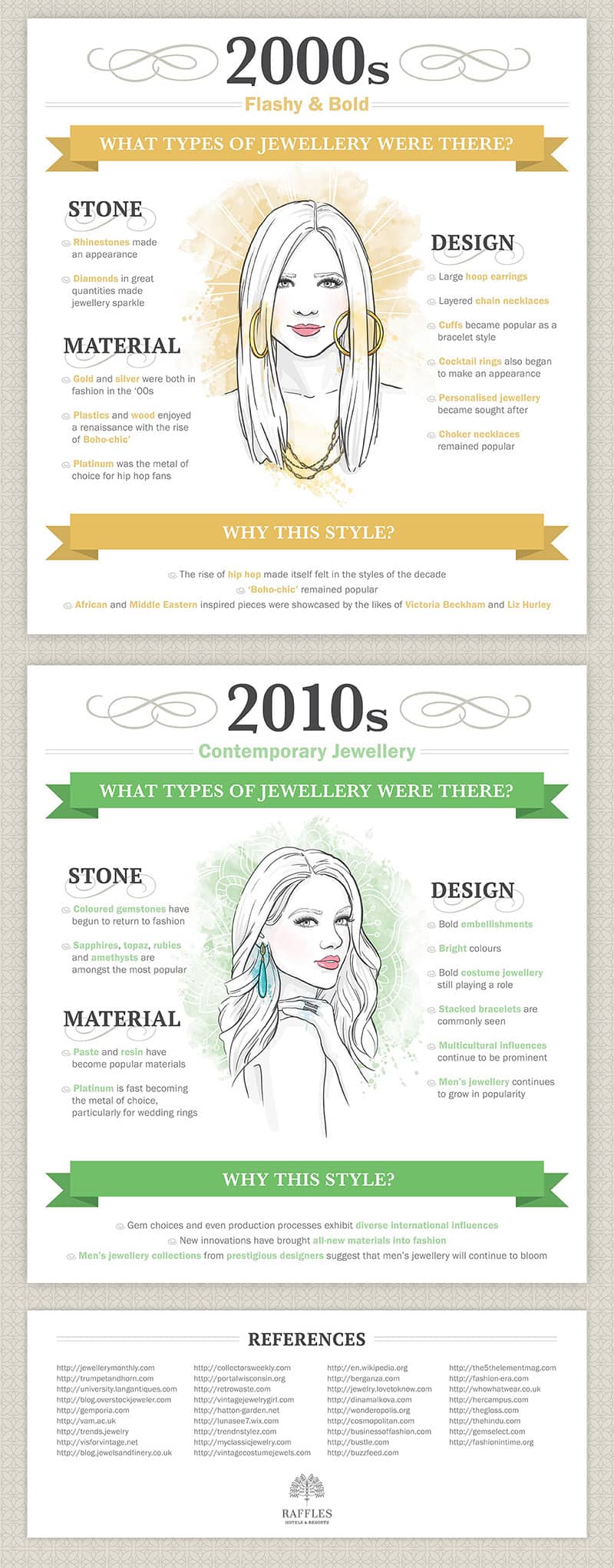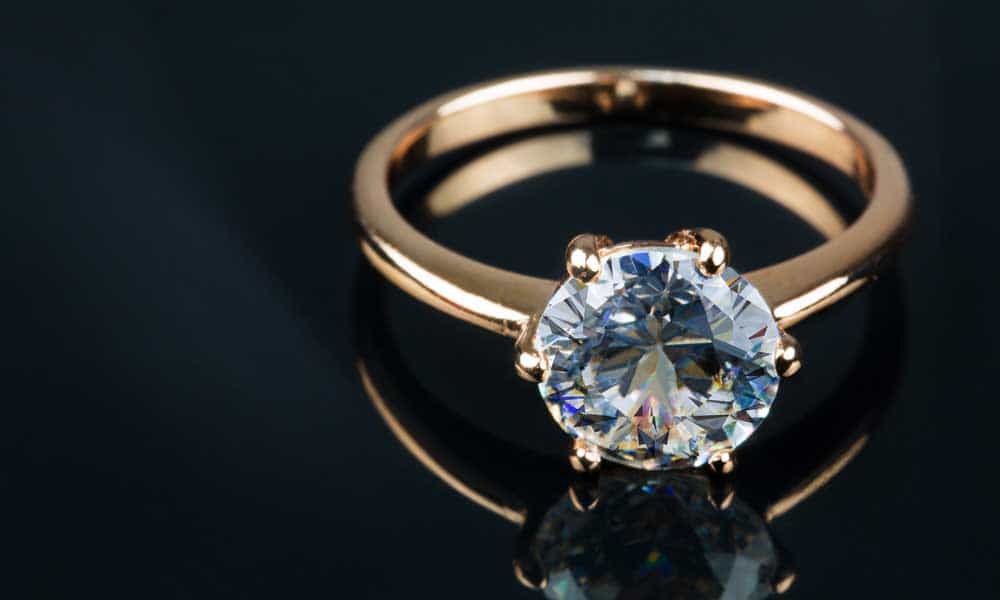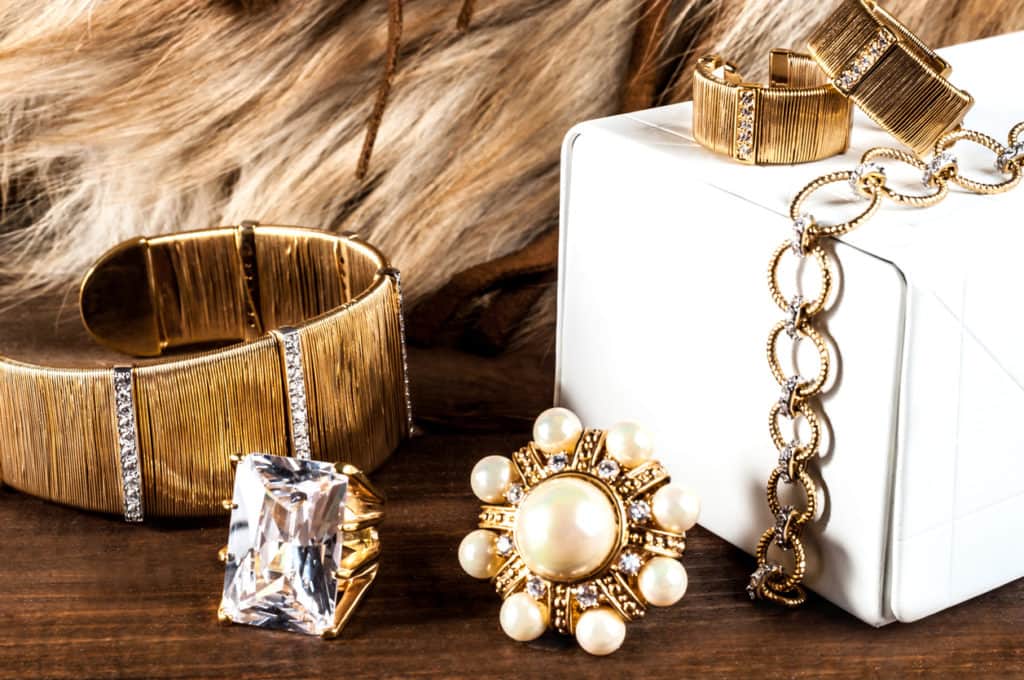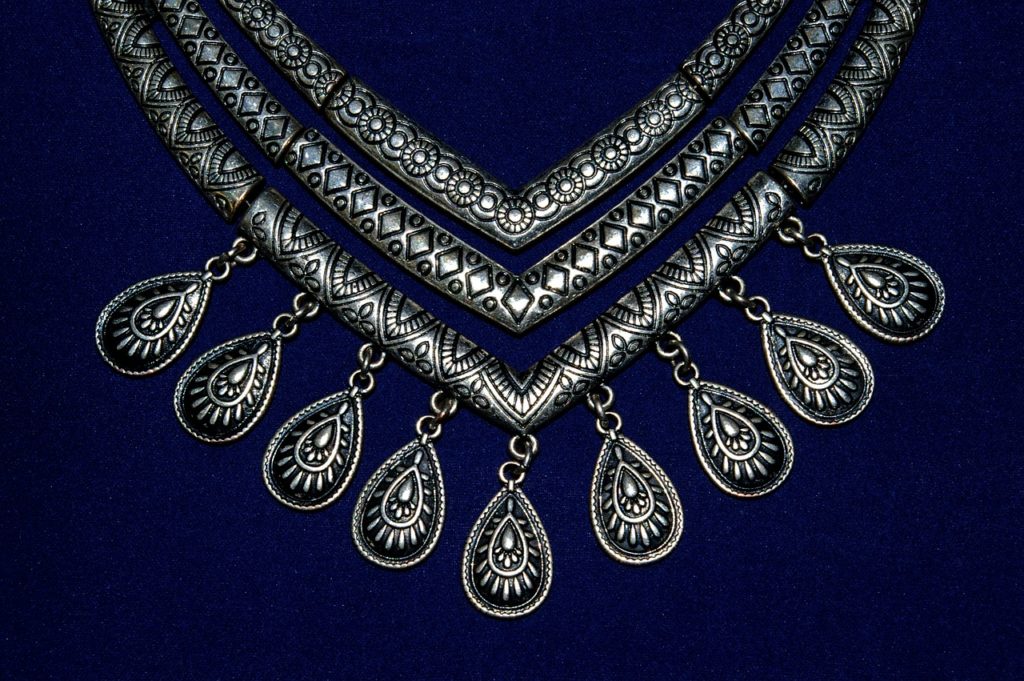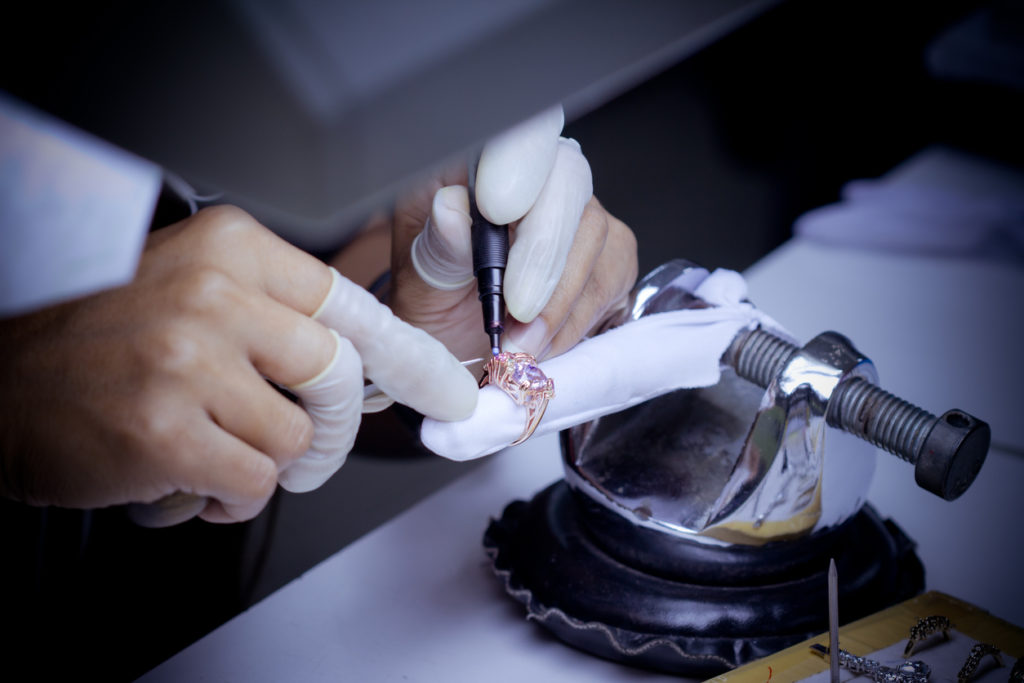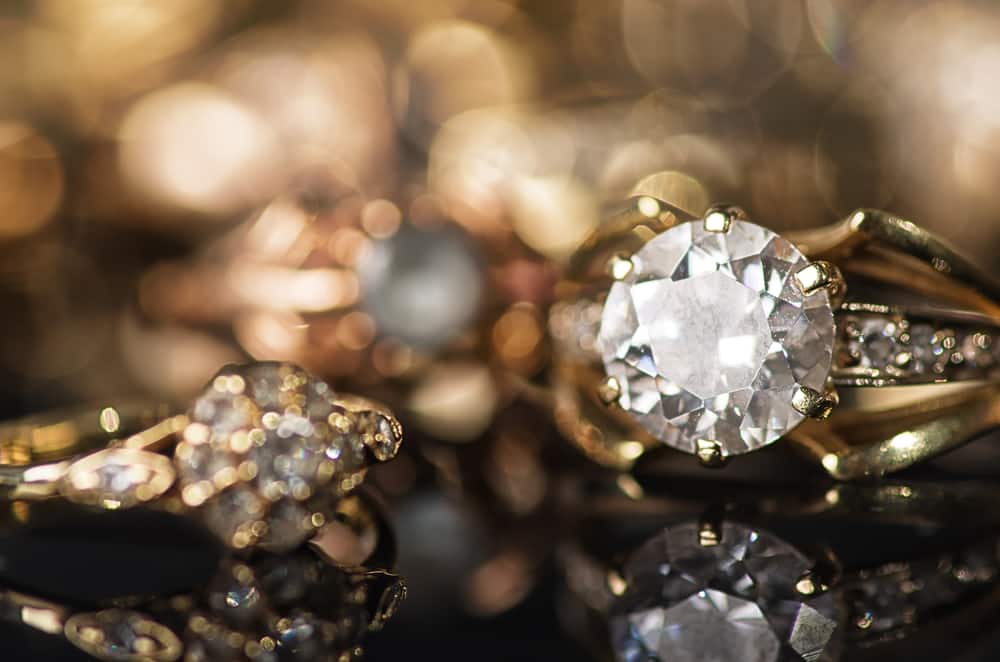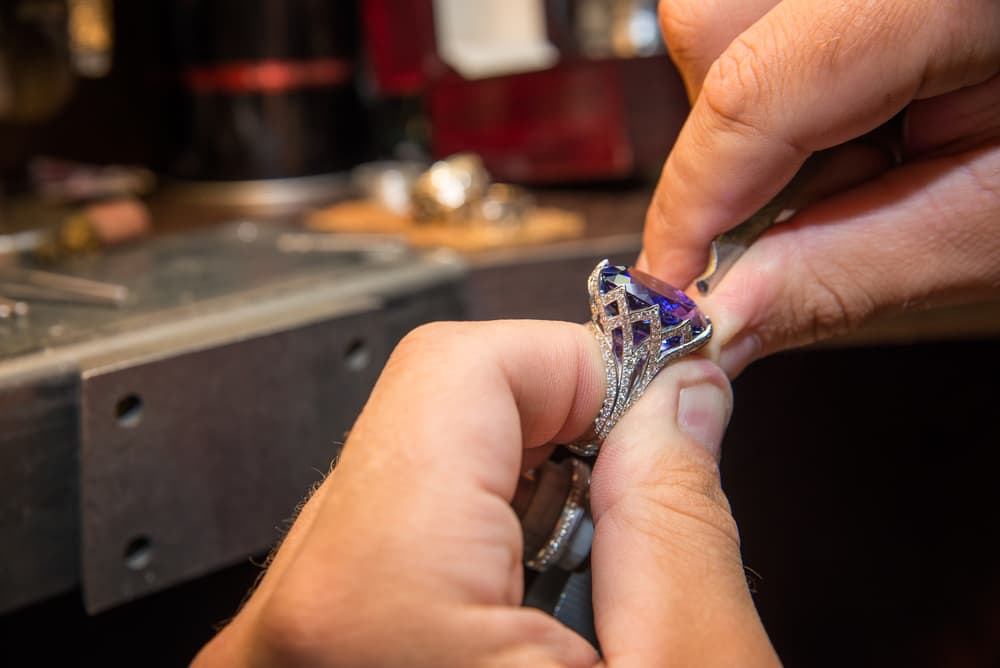Custom Jewelry
How To Buy A Diamond
1) Understand the 4Cs of Diamond Quality
This basic knowledge will not only unlock the mystery of a diamond’s quality, it will help you understand a diamond’s value and price.
Diamond Color In most diamonds, the term actually refers to the absence of color. The less color in the stone, the more desirable and valuable it is. Some of these differences are not visible to the naked eye, but directly impact the overall quality and price of the stone.
Diamond Clarity measures the amount, size and placement of internal ‘inclusions,’ and external ‘blemishes.’ Grades run from ‘Flawless,’ with virtually no imperfections, to ‘Included,’ which contain a significant number of imperfections.
Diamond Cut does not refer to a diamond’s shape, but to the proportion and arrangement of its facets and the quality of workmanship. The amount of brilliance, sparkle and fire in a diamond is determined by cut. Grades range from ‘Excellent’ to ‘Poor.’
Diamond Carat refers to a diamond’s weight. Generally speaking, the higher the carat weight, the more expensive the stone. Two diamonds of equal carat weight, however, can have very different quality and price when the other three Cs are considered.
No matter how beautiful a diamond may look you simply cannot see its true quality. The 4Cs of diamond quality will provide you with the information you need to know the diamond’s actual quality.
2) Choose a jeweler as you would choose a doctor
Your jeweler should be armed with expert training, open to questions and able to provide answers in clear, simple language.
Professional training can help you evaluate how knowledgeable a jeweler is. Preferably, their training comes from a highly-recognized and internationally accredited program, such as the GIA Graduate Gemologist (GG) or Applied Jewelry Professional (AJP) diploma programs. An educated jeweler will not only explain the 4Cs of Diamond Quality to you, but will be able to demonstrate the differences between apparently similar stones. They will also encourage you to compare a number of diamonds that fall in your budget.
3) Insist On a Diamond Grading Report
A diamond grading report from an unbiased, scientific source such as GIA is more than important information, it’s proof of what you are purchasing. The differences in diamonds can be so subtle, even a trained jeweler can’t recognize them without lab verification. Insist that any diamond you buy come with an indisputable verification of its quality.
4) Protect The Purchase
Have your diamond appraised and insured. Appraisers and insurers rely on diamond grading reports to accurately evaluate the value of gems. As an additional measure, consider having your diamond laser-inscribed with its GIA report number, to provide verification if it is ever lost or stolen.
Custom Jewelry
Akoya Cultured Pearls
The pinkish-white, identically sized, round pearls that you probably think of as the classic strand of pearls are most likely Akoya cultured pearls. These pearls are most often produced in Japan, but are also farmed in other parts of the Asia-Pacific area.
History
Koichi Mikimoto of Japan was the first to culture a round pearl in the early 1900s after years of experimentation. Today, the Akoya cultured pearl (named for the type of oyster used to produce it) continues to be a specialty of Japan.
Sources and production
The legendary beauty of Akoya pearls is attained by just the right water temperature and pH balance in the waters used to cultivate them. That means they can only be produced in certain parts of the world. The majority of Akoya pearls come from Japan, though they are also produced in China, Vietnam and a few other areas.
To culture Akoya pearls, one to two round shell beads are implanted into the tissue of a pearl oyster. In reaction to this irritant, the oyster begins to produce nacre, the lustrous white coating that creates the pearl. The longer the pearls are left in the water, the more coats of nacre they will have, which makes them more beautiful. The bead remains within the pearl as its nucleus.
Color and surface
Higher-quality Akoya pearls are almost reflective in nature and appear to have several layers to them: this phenomenon is called luster. The water temperature and makeup, as well as longer cultivation periods resulting in thicker nacre, all contribute to this spectacular lustrous sheen.
Akoya pearls occur naturally in colors such as pink, silver, cream, white, gold, gray and blue. They rarely occur in black, green or other exotic colors — if you see Akoya pearls in these colors, be sure to ask the seller if the color is enhanced.
Smoothness is a quality factor that affects the grade and price of Akoya pearls. Because they often live in the ocean for six to 18 months, Akoya pearls often come with at least a certain number of blemishes from the months of exposure to saltwater, sand and other natural elements. But the fewer blemishes there are, the more the pearl is worth.
Shape
You’ll often see Akoya pearls that are perfectly round, because they tend to be cultured for roundness — which is one of the reasons their nuclei are round shell beads. Akoya pearls are often valued for their roundness and the symmetry of their shape and size when used in pearl strands.
Size
While Akoya pearls range from 2mm to 10mm in circumference, the average size is 6mm to 7mm.
Use in jewelry
Akoya pearls are best known for their use in beautiful, well-matched pearl strands, which feature pearls that are nearly identical in size, shape, color and quality (luster and surface flaws). Akoya pearls are also popular in pendants, stud or drop earrings, and rings.
Akoya pearl care
Pearls are delicate. The nacre on the outside of pearls is soft, and because it is layered over a shell-bead nucleus, it can wear or chip away over time if you don’t treat the pearls with extreme care. Keep your Akoya pearls in a box with a soft lining and away from metal jewelry that can rub against them. Also be careful not to get makeup, hairspray or harsh soaps or chemicals on your pearl jewelry. If you’re active or work with your hands, you might want to avoid Akoya pearl rings.
Custom Jewelry, Engagement Rings
Turning An Heirloom Into A New Design
If you’ve received an heirloom jewelry inheritance that’s just not “you,” consider an extreme makeover to create something you’ll wear every day.
Heirlooms, by definition, are family possessions passed down from generation to generation. Heirloom jewelry exists in two forms — there’s heirloom jewelry made of high-quality metals and precious gemstones whose design exhibits exquisite craftsmanship, and there’s the heirloom that may be lacking in quality elements but has deep sentimental value.
Sadly, that heirloom, no matter what its form, may not be right for you. It may be an ornate brooch, and you just don’t do brooches — or anything ornate for that matter. It may be a pair of earrings in a gorgeous white gold setting with pieces of pretty glass instead of precious gems.
Talk to a jeweler
Instead of leaving heirloom jewelry to hide in a “junk” jewelry box, you can take your pieces to a trusted jeweler to have them made over. There are so many ways to bring new life to old jewelry, and a reputable jeweler can help make it happen. You can modernize an old setting or create a new one. You can take an element or two of the old piece and freshen it up in a new piece. You can mix elements of different pieces and come up with a whole new design. Achieving this transformation from old to new is a joy for someone who specializes in the art and science of jewelry design.
The possibilities are many:
- Turn a pendant into a ring.
- Repurpose a ring into a pendant.
- Take the diamonds from the bracelet of a diamond watch and turn them into a pair of earrings.
- Pearls can be restrung to a shorter length or combined with other pearls to create a whole new look.
- A quiet gemstone can be given a sparkly halo and get a dash of glamour.
- Is the setting gold when you want platinum? Keep the gemstone or gemstones and change out the metal.
An unworn engagement ring (and we’re not asking why) can be turned into a fashionable ring for your right hand or a pendant. A collection of gold hoop earrings no longer worn can become a unique pendant — or be redesigned into two pendants that can be passed down to two daughters. A gold necklace can be shortened and turned into a bracelet, accompanied by jewels that came from another piece.
What this means is, if you don’t like necklaces, you can own a couple of bracelets with a past! If you don’t wear rings, you can create a pendant with a future. Your options are only limited by your imagination and your designer’s skill.
Be thoughtful
Jewelry often holds deep, personal meaning to the owner, so you may want to keep the giver’s thoughts in mind if you’re thinking about redesigning a piece. If you’ve received your heirloom jewelry through an estate, this is not an issue (although some family members might be aghast at the thought of you “defiling” the past). But heirloom jewelry can be passed along while the owner is still living. Some givers bestow with no regrets, only joy at passing along their beloved past. Others may expect a gift (especially one they received as a gift) to stay intact. Only you can determine what’s right for your personal situation — it’s just a point to keep in mind if you might need to keep the peace.
Heirloom jewelry usually has a story behind it that makes it even more special or sentimental. Redesigning a piece that doesn’t work for you in its current style is a way to let you carry that story from one generation to the next. In this day and age, we recycle everything. Home designers use recycled barn wood to create ageless mantles for fireplaces. Recycled plastic takeout containers become decking for patios. Some of us compost at home or reduce our carbon footprints by diligently turning out lights and using more efficient types of bulbs. Instead of wasting a piece of heirloom jewelry that just isn’t right for you, consider recycling the past for a new and brilliant future.
Custom Jewelry
Types of Gold Used to Make Jewelry
Let’s see what types of gold exist and how they are created.
Yellow Gold
Yellow gold is the most common type of gold used in jewelry.
It should be noted, however, that although yellow is the natural color of gold, yellow gold is not the same as pure gold. Since this metal is very soft, it is not suitable for jewelry making unless it is mixed with other metals to make it harder.
The yellow gold jewelry you see in stores has varying degrees of purity depending on how much actual gold it contains as measured by its karat.
The lower the percentage of gold content in a piece, the lower its karat number is.
In general, lower-karat gold jewelry has a yellow color that is less intense than that of higher-karat pieces. Low-karat items are also harder and more durable than gold jewelry that is purer.
Colored Gold
Since yellow is gold’s original color, any alloy of this metal that has a different hue is considered colored gold.
The color of a gold alloy depends on what other metals are included in the mix. Here are the most common varieties of colored gold:
White Gold: This is the most popular gold alloy used in jewelry. To achieve a white color, gold is mixed with metals such as palladium or nickel.
Adding white metals is not enough to get a perfect white color, though, and a white gold alloy still looks a bit yellowish. This is why it is plated with rhodium, which actually gives white gold jewelry its color and luster.
Rose Gold: Rose gold owes its color to the copper that is mixed in the alloy. The more copper there is, the more pronounced the rose color becomes.
High-copper rose gold alloys have an intense reddish hue and are therefore also known as “red gold.” Rose gold varieties that contain less copper have a faint color; for that reason, those alloys are also called “pink gold.”
Black Gold: A gold alloy can be turned black by using several methods. One way is to simply cover the surface of the piece with a black compound (such as black rhodium).
Another option is to treat the surface of the item with certain chemicals so that it changes color. It is also possible to change the color of a gold alloy containing cobalt, copper, titanium, or iron by causing its surface to oxidize through the use of heat.
Green Gold: This type of alloy is made by mixing gold with silver (and more rarely, cadmium). The green color is usually not very intense, and most green gold looks more like yellow gold with a greenish hue.
Grey Gold: The grey color of this alloy is achieved by mixing gold with copper, silver, and manganese.
Purple Gold: The purple color of this alloy is achieved by adding aluminum and pure gold together. Purple gold is, however, not very durable and can break easily because the compound is relatively brittle.
Blue Gold: One way to produce blue gold is to mix indium with pure gold. Like purple gold, the resulting blue gold compound tends to be brittle.
An alternative way to make blue gold is to mix gold with iron or rhodium and treat the resulting alloy with heat so that the mixture oxidizes and forms a blue layer.
Custom Jewelry
Considering a Custom Design
Want your engagement ring to be a story starter for years to come?
Learn the process, pros and cons of custom designing your own special ring.
Let’s get this out of the way first: Every committed relationship and the love it stems from is unique. You can and should find an engagement ring that is uniquely fitting to both that love and the finger that will carry it, well, for a lifetime.
The specifics of that distinctly perfect ring vary from couple to couple because — you got it — every one of us is unique! Many will find the perfect engagement ring by choosing and combining individual elements — diamonds or gemstones, metal, setting, band style — and using these basic building blocks to uncover an infinite number of truly individual styles. Others will want to add special touches to further personalize their rings.
And some will find that the standard white diamond center stone — possibly flanked by side stones and set in gold or platinum — just isn’t for them, but will still find the non-traditional ring they seek in a jeweler’s (or high-end designer’s) display case.
However, if you have a singular vision of how your ring should appear and can’t find it anywhere, you might consider a custom design. Every engagement ring has a story, but if you also want yours to be a story starter decades after you say “I do,” then a custom engagement ring may be for you.
Make an informed decision
Before plunging ahead with a plan to custom design your own engagement ring, understand the pros and cons, and review this primer of what it will take to make your inspired idea a reality.
Creating a custom-designed engagement ring has great benefits:
- Your ring will feel inspired and creative, a pure reflection of your individual personality.
- It will reflect your interests and values.
- No one else will have a ring quite like yours.
- A truly unique design will garner attention, and will be a conversation starter for years to come.
- By creating matching rings, you can also create a symbol of who you are as a couple.
But you should also keep in mind the trade-offs you make when creating a custom ring:
- It’s more expensive. Don’t be surprised to pay up to three times what you would for a non-custom ring. How much more depends on how elaborate the design is, how far it deviates from more traditional rings and the jeweler you choose.
- It takes longer. While it’s on the extreme high end, one well-known actor collaborated with a designer on his future fiancée’s dazzler for 12 full months. On the low end, expect a well-thought-out design to take several months from idea to finger.
- It requires more involvement (several touch-point meetings and a good deal of collaboration) on your part.
- The jeweler also has a say in the ultimate design — and as the expert with precious metals and stones, he or she should.
- It’s unpredictable. You don’t get to see, touch and feel the weight of the ring until it’s finished.
Understand the process
The specifics will vary according to your needs and the jeweler you select, but in general, here’s what you can expect when designing a custom engagement ring.
1. Sketch out Your Idea
Start by asking yourself: Do I have a distinct vision of the ring I want? Remember, simply wanting “something unique” doesn’t necessarily warrant going the custom route, because any engagement ring can be made to be unique.
Then, sketch out your idea as best you can. If your idea isn’t super-specific — or if you want to further articulate your desired style — start prowling jewelry stores and the Internet and sketch elements (filigrees, unique settings, organic lines, mixed metals) that catch your eye. This is basic logic but it bears noting — the more specific you can get with what you have in mind, and the more aptly you express this to your jeweler, the more likely you’ll end up with what you want.
2. Find the Right Jewelry Designer
Once you have an idea in mind, you’ll need to find a jeweler who can do a custom design. Start with a jeweler you know and trust, if you have one. Often, your own jeweler will have someone in-house who can create custom designs or can refer you to a trusted colleague. Otherwise, turn to referrals from family and friends, and follow all the same guidelines for finding a jeweler that you would if you were purchasing a non-custom ring.
When looking for a jeweler to create a custom engagement ring, you should also ask to see some previous work. Recognize that, as an artist, a jeweler will likely add his or her own touches to your idea, so you’ll want to be sure you like the elements — like style and weight — of the previous work.
3. Collaborate
You have your sketch(es) in hand. You have a trusted jewelry designer. Now have a long conversation to get your project moving in the right direction. Once the custom ring design is under way, be sure to review a full color illustration, a picture made by computer-aided design, or CAD, or see a mock-up in wax of the final product so you can give input and shift directions if it’s not what you expected — or want. Also be sure to see all the elements (metal and stone or stones) in person, to get a better idea how it will turn out.
It’s natural to feel intimidated when speaking to an experienced jewelry designer about your vision for your ring — he or she is the expert, with years of knowledge, artistry and passion. But don’t let this stop you from asking questions and voicing concerns. It’s your ring, not the designer’s.
4. Protect Yourself
Take extra care with warranties and guarantees when working on a custom ring design. You’ll want to get everything in writing, from what elements you agreed to include in the ring to a final appraisal that notes the custom design and designer. Last, but not least, while its value is far greater than monetary, don’t forget to insure your ring.
Custom Jewelry
Frequently Asked Questions about Custom Jewelry
We have assembled a set of the most frequently asked questions.
How much does it cost?
Custom Designed Jewelry can cost less than you might expect. Of course, it’s more costly than mass produced, often poorly made jewelry, but it’s worth it to get a quality piece, made just the way you want it.
How long does it take?
Once we agree on a design, and accept a deposit, it usually takes about 8-12 weeks until we are done. At this point the jewelry is ready to ship.
Before this, sometimes there will be some time of back and forth before we arrive at the design that is truly perfect for you. It takes a little longer via the internet, but that’s part of the process.
What if I don’t know the ring size?
As soon as we have started the job, we can send you a set of ring sizers to try on.
Are you going to make a whole bunch of copies of my ring?
The answer is No, with some clarification.
If your piece of jewelry is unique to you, a very distinctive design, then we will not copy those elements that make it yours. While we retain ownership on the copyright of all works we create, as a courtesy we don’t exactly copy custom designs we have made specific to a particular customer.
If you are only making a version of one of our regular designs, then yes, we can still make it. If your design is generic, that is, not specific, then yes, we cannot allow that to be taken away from our repertoire.
For example:
You are getting a Celtic design ring with knotwork alternating with a Tudor rose and a Holly leaf and the initials TRS. We will not reproduce your ring.
We can still make Celtic knot rings. We can still make Tudor rose jewelry. We can still use Holly leaves in designs. We can still make a different ring for a customer with the initials TRS.
I saw a ring by another designer, can you make a copy for me with my diamond?
We do not copy other designer’s work. From a legal standpoint it is prohibited. Since we create unique designs ourselves, and hate it when they’re copied, we won’t do it to others. Certainly, though, if you would like to have a design in a certain motif, or style, or feeling, perhaps with the same essence expressed by an example you found, we can certainly design a new piece that meets your expectations.
Also some designs are what is termed “generic” and are simple enough, and widespread enough that no one can claim ownership of them. These designs we can recreate.
Can I have another jeweler copy the piece of jewelry I get from you?
No. We retain copyright on everything we make.
I want matching sterling silver pendants for my club emblem, can you help?
Certainly! We are able to create multiple pieces for you to use for a club, a family, in your business as premiums or for resale. Typically we can quote you a cost for setup, and a cost to produce the pieces. The setup charges can start as low as $300, with $400-600 being more typical. Many pendants can be produced in Sterling silver for as little as $35 each, while rings start at $60. Low minimum orders of 10 pieces per style make it easy to get started.
Can I use my own Gold?
Good question, in these times of high precious metals costs. Some jewelers do this, but to recast old gold into new jewelry causes severe quality problems in the new piece. We know, we have seen them. We will recycle your old gold materials by turning them in to our refiner, and give you credit towards your custom job…. so in effect we are using your gold.
It’s like you have an old 1988 Ford sedan.
Wouldn’t you like to take it back to the factory and say ‘hey, I’ve got the metal, wires, leather and rubber. Run it back through the factory, make a new one and just charge me the labor-couple of grand, right?”
Recycling your old gold and using your stones we can make you a new piece of jewelry that new would cost thousands, but using your items will cost in the hundreds and it’ll be the beautiful and the envy of your friends!
Is Custom work more costly than ready made jewelry?
Sometimes yes, sometimes no, but it represents a better value. You may spend a little more than you would for mass produced jewelry, but you get a lot more for your money.
It should be noted that with our pieces, doing custom work, there is original design work, individual attention, model making, casting a one of a kind piece, and finally a level of individual hand craftsmanship in polishing and stone setting that are totally different than factory mass production. It means you end up with a vastly superior piece of jewelry.
Where do I go from here?
Get a Quote or Ask a Question.
Custom Jewelry
How to Identify Your Diamond After a Jewelry Repair
Many people are wary of leaving their diamond rings to be repaired at a jewelry store for fear that the jeweler might replace their diamond with another one. While most jewelers are unlikely to risk their reputation in such a way, it is still good to know how you can identify your diamond if needed.
Using Diamond Characteristics for Identification
One of the most straightforward ways to recognize your diamond is to know its distinctive features well.
You might think that all diamonds are the same, but if you look at a stone really hard, you will start to notice some characteristics that make it different from others.
The diamond feature that is impossible to falsify is the configuration and type of the stone’s flaws: Their number and location, taken together, are unique to each diamond.
If you memorize some of your stone’s inclusions or external flaws, you will be able to tell your diamond from others just by looking at it.
If your diamond has a characteristic black spot or a line inside of it, for example, use that as a recognition mark.
Sometimes, you will need to use a 10x loupe to be able to view your stone’s inclusions if its clarity is really high.
Using Diamond Characteristics for Identification
One of the most straightforward ways to recognize your diamond is to know its distinctive features well.
The diamond feature that is impossible to falsify is the configuration and type of the stone’s flaws.
You might think that all diamonds are the same, but if you look at a stone really hard, you will start to notice some characteristics that make it different from others.
The diamond feature that is impossible to falsify is the configuration and type of the stone’s flaws: Their number and location, taken together, are unique to each diamond.
If you memorize some of your stone’s inclusions or external flaws, you will be able to tell your diamond from others just by looking at it.
If your diamond has a characteristic black spot or a line inside of it, for example, use that as a recognition mark.
Sometimes, you will need to use a 10x loupe to be able to view your stone’s inclusions if its clarity is really high.
You can also use the diamond’s external flaws: Simply remember where some of the more visible chips or nicks on its surface are located.
After you’ve studied your stone’s characteristics, pick some of them to use as marks and put down a description of their appearance and location on paper.
Next time you pick up your diamond jewelry after a repair, look for those characteristics in the diamond you are given back to find out if that is really your stone.
Inspecting the Diamond Plot
If you decide that using the flaws in your diamond for recognition is a good idea, here’s something that will make your life easier: a diamond plot. This is a map of the flaws in a diamond as seen under magnification and is unique to each stone.
If your diamond is certified (as it should be), you can usually find the diamond plot in the stone’s grading report. Whenever you want to make sure that the stone you have is your original diamond, just take out the plot and check whether the configuration of the diamond’s inclusions matches the one that is plotted.
Identifying Diamonds by Carat Weight
Another way to find out whether a stone is your original diamond is to weigh it and record its weight before you leave your jewelry at the store to be repaired. Since diamonds do not come in perfectly identical and round carat weights, this is yet another way to identify your stone.
If your diamond’s weight is 0.183 g, for example, it should weigh the same after you get it back from the store.
It is best to weigh your diamond loose, however, as your mounting’s weight can change before after the repair depending on whether new parts or additional metal was used in fixing the piece.
This method has more limitations than using the diamond’s inclusions as you will need a precise scale to weigh your stone and you will most likely need to take it out of its mounting.
Checking the Diamond’s Laser Inscription
The easiest way to recognize your diamond is to use its diamond inscription: A small number that is engraved with laser on the stone’s edge.
The laser inscription is unique to each diamond and should be included in the stone’s grading report. Checking this number using magnification is the fastest way to identify your diamond.
If your stone will need to be taken out of its setting during the repairs, ask the jeweler to make sure that when the diamond is put back in, the laser inscription is clearly visible and not hidden by the mounting. This way, you would be able to check the ID number quickly while at the store.
The problem with diamond inscriptions is that not all stones have them, for various reasons: The diamond might not be certified, or even if it is, the manufacturer may have chosen not to have the diamond inscribed.
If that’s the case, you can always pay to have your diamond inscribed by a grading lab, or alternatively, you can rely on your stone’s inclusions for identification.
Custom Jewelry
Everything to Know About Custom Jewelry
Custom design jewelry… the idea conjures up many strange thoughts. We are finding out that many people don’t understand the process and how easy it can be to do. Custom design has many misunderstandings. The first one is custom jewelry is always very expensive. No, this is simply not true. Custom jewelry can be very affordable. We have done custom designs that have saved our clients thousands of dollars over designer jewelry.
To help over come many of the misunderstanding I am using a question — answer style of article. This means I will not answer all your question so please call or come in to get a better understanding of custom design jewelry. You can see many of the examples of designs and waxes and final jewelry pieces. The process is very fun and enjoyable. Also, be sure to check out our custom design gallery. It is a great place to get inspiration and to enjoy all the different styles of unique jewelry.
Do I have to be a jewelry designer to have a ring custom designed?
NO. We are the expert jewelry designers. You are the expert in what you like. Putting these two experts together is the fun part.
What if I don’t know what I want?
Don’t worry, we have a system to discover what you want. It is a simple way to find out what you like and then put it together just for you. Jewelry has many small parts but most people just see the whole thing. Imagine a car; the overall look of the car is made up of all of smaller components. For example, the headlight shape and position, the size and angle of the windshield, the front fenders and even the door handles and windshield wipers have an impact on the car’s look. Now, if you had an expert designer who could put all the parts together from the different cars you like, it would look great to you. They can’t build a car just for you, but we can build a ring just for you.
What style should I choose?
Jewelry style can give people a great sense of dread or be totally irrelative. What is in fashion? What are the trend setters wearing? These are the heart and soul of many people and jewelry stores. Some jewelry stores only sell what is currently in style and if you don’t like it that’s tough. Jewelry fashion changes every season just like clothes do. What’s hot now will not be next season. Some trends are long like the white gold and platinum look which has been going on for over seven years now. The current design look with every surface of the ring left enhanced looks great when done right. When done wrong looks too busy, baroque, or garish. A couple of seasons ago the opposite look was in vogue (literally also), a simple clean bright finish geometric shape ring designs. Yes, we keep up with the fashions of the day. To our clients who want the cutting edge fashion statement, we can help you design a very in vogue ring.
Jewelry does last longer then a hemline. We do many redesigns because a certain style was predominate in the jewelry stores when they brought their ring, but they were not ever very happy with it. Custom design, I feel, is the best way to achieve a personal preference in jewelry regardless of the current trends. If you want a five stone diamond ring and not a three stone ring, it can be done. If you want a complicated top of ring but not the sides, it can be done. If you want diamonds everywhere, down the shank, on the sides, on the prongs, and even inside (yes we have set diamonds inside) it can be done. Jewelry and wedding rings. in particular, are heirloom quality and can last decades and even centuries. Many styles will come and go and even come back again in the lifetime of a well-designed ring. Jewelry design for a personal taste will be enjoyed for many years or at least until the person’s taste change, then it’s redesign time.
Jewelry style has anther aspect. Jewelry as art… Some jewelry designs can only be described as art. If you have a piece of jewelry art in mind and need a way to express it, we can help. With the computer jewelry design system we can make your vision become a reality. This is one of those times when technology can fulfill the desire deep with in you. If you want a piece of jewelry art, our designs are more then willing to create a masterpiece for you.
What is redesigned jewelry? Or Redesigned?
Simply put a redesign to a custom design using your existing gems and gold or platinum. This does not mean you are limited by the gems you have, but what you have is incorporated into the new design. You can add gems or use less of the gems you already have. Many clients have used the main diamond of the old ring to be a side diamond in the new design. Others have made a few design changes, but it is basically the same look and feel, just newer.
I have worked with clients who have changed their wedding ring after only two years and others waited until over 50 years. The reason to redesign range widely. The ring is warn out (it would need a new shank and all new heads), to the style is not right for me now, or the very popular reason going bigger—upgrade time.
Does redesigning the wedding ring mean I don’t love him anymore or things need to change in the marriage some ask. Styles change, what can be done in the jewelry trade changes, life style changes (more money), these changes and others are the motivation to redesign the wedding ring not the marriage itself. There is one exception I have seen over the years. The wife never liked the ring, but did not tell him. The why’s are: did not wish to hurt his feelings, we settle for it, that’s just what we did back then and others. As the marriage deeps an open and trusting bond can allow the wife to finally share “I love you but not the ring so much”. It is a great joy to work with these couples who reach this level of trust.
Why do we need to make a wax model?
The process of making jewelry involves a wax model. The jewelry is designed in wax, then the wax is put into a mold of plaster. The plaster mold is heated and the wax melts out and makes room for the gold or other metal to be pored into the void. Then the plaster is broken away and the jewelry is made. This operation is called the lost wax jewelry process.
Is custom design better than mass-produced jewelry?
Generally speaking it is better. At Arden Jewelers we make sure it is. The way we make the custom design jewelry, we know it is better. We have gemologists and trained jewelry designers along with bench jewelers all collaborating to design the best jewelry. Our jewelry designs are made to last. We use more pure noble metal than mass-produced jewelry. We design into the piece strong gem setting features.
Can I make platinum custom design jewelry?
Yes, you can have the jewelry made in platinum, 14 karat gold or even sterling silver. We can make your jewelry in many different types of gold like 9, 10 14, 18, 22, 24 karat gold. The gold can be white or yellow or even red or green. We can make two tone white and yellow or red and white. For that fact, if you want we can put all four colors of gold in your design. If you want an unusual karat of gold like 19, we can do that as well. We even have at least three different qualities of white gold to choose from. If you are allergic to some types of gold we can work with you to find one you are not allergic to.
Custom design sounds very complicated?
Yes, it is to us, but not you. We make your part very easy. We just ask questions about what you want and we know what it takes to make that happen. If you don’t like white gold that looks yellowish, we know how to fix that. If you don’t want the ring to slide around, we can fix that. Custom design is about the jewelry you like and we work out the details to make your dreams come true.
Custom Jewelry
The Beauty of Creating Your Own Custom Design
If you can’t find exactly what you want, here’s how to go about getting a custom jewelry design.
Do you turn left when your friends go right? Are trends trivial to you? Do you march to a different beat? If so, you’ll appreciate jewelry that’s not available to everyone. You’re a candidate for custom jewelry design.
The same is true if you’ve searched jewelry stores and websites and still not found a gift for that truly special someone — something that represents your unique relationship. It’s also entirely possible you are the special someone — and can’t find the right piece that represents your unique style.
It’s important to understand the difference between customized and custom jewelry. If you engrave someone’s name or “build” a piece of jewelry from a list of options, you will end up with a personalized, meaningful and beautiful piece of customized jewelry.
Custom jewelry, though, is designed from scratch, and the design is used only once. Custom jewelry is often an option when you can’t find exactly what you want (like an updated version of your grandmother’s now-lost Art Deco earrings). Custom rings may be similar to something you saw online, but with a simpler design for a diminutive finger. Or perhaps it’s a pendant that follows a favorite neckline style or calls to mind a memory of something — or someone — special. You might have diamonds or gemstones from a ring you want to rework into another piece of jewelry that represents you. Regardless of the reason behind the vision, custom jewelry is the ultimate expression that a loved one took the time to understand the recipient in a meaningful way.
How it happens
1. GET THE BALL ROLLING
The best surprise is if the custom jewelry is, well, a surprise. However, there’s nothing wrong with designing it yourself or dropping a hint for someone else to do it: “You’re such a creative guy. Sometime for an extra-special occasion, I’d love for you to design a (fill in the blank) for me.” Once he gets the idea, he may still need some direction: “You could just sketch something on paper and take it to Santayana Jewelers to have it made.”
2. TRANSLATE THE VISION
Whether you’re giving custom jewelry to someone else or someone is giving it to you, the first critical element is the vision. Whoever designs the jewelry should think about the type (ring, necklace, earrings, etc.) and the general shape (for example, button or drop earrings, or a round or rectangular pendant). Don’t be afraid to start over, and be sure to do a separate enlarged sketch of any intricate parts of the design, such as filigree or a floral design on a ring shank.
3. CONSIDER THE DETAILS
What metal does the wearer prefer (platinum, gold, sterling silver, tungsten, titanium, etc.)? What gemstones (diamonds, colored gemstones, gem-quality minerals, none) and style (a filigreed, traditional design or clean-lined contemporary)? Note: mark on the sketch what materials you’d like to use so you don’t forget when speaking with your jeweler.
4. MEET WITH YOUR JEWELER
Make an appointment with your jeweler (if your jeweler doesn’t make custom designs, ask him or her to recommend a trusted colleague). Before showing your sketch, ask to see some of the jeweler’s previous custom pieces (at least the pictures). Look critically to make sure rings are perfectly round, gemstones appear secure in their settings, the finish is even and there’s nothing that would make the jewelry uncomfortable to wear.
5. REVIEW THE SKETCH
Show the sketch and describe the look you want. Go over the materials and the dimensions (if it’s a ring, for example, you’ll need to know the wearer’s size}. Let the jeweler ask questions and refine the sketch either by hand or using computer-aided design (CAD), which uses sophisticated software to create detailed designs and drawings and dimensional images. The jeweler will make revisions to make sure the jewelry is wearable and stable, that it’s not too heavy and that the proportions are pleasing.
Some jewelers are making it even easier. With a tablet, the jeweler will interpret your sketch and enter the details of your idea into a form, and as you go it will give you a real-time estimate of what it will cost.
6. MAKE REVISIONS AND GIVE FINAL APPROVAL
Expect to make several visits to the jewelry store to check revisions until you give your final approval. At that point, the jeweler will make a wax model or CAD drawings showing different angles of how the final piece will look. Be certain you like the model or final drawings before you give approval. Any changes after this point will involve additional expense and may even require starting over. Because a wax model is destroyed in the casting process, you won’t get that back.
7. MIND YOUR BUSINESS – LITERALLY
While it’s easy to get swept up in the emotion of designing a special piece of jewelry for someone you love, don’t forget the business aspect of the process. Even before the jewelry is made, get everything in writing from the jeweler, including your responsibilities and the jeweler’s, what elements the jewelry will contain and an appraisal that notes it’s a custom design and lists you as the designer. And don’t forget the warranty!
Be prepared
You should expect to pay more and wait longer for custom jewelry than you would if you bought something out of your jeweler’s showcase. It costs more because the materials will have to be ordered individually. Plus the model and the final jewelry will have to be produced — both of which involve time and labor.
Allow about six weeks to two months from the time you show your sketch to the jeweler until the time the finished jewelry is placed in your hand. The time is needed for multiple meetings to arrive at the final design, to create the final model and to make the final piece of jewelry. That timeline could stretch if you make a lot of changes.
Despite the challenges, custom designs are usually heirloom pieces that are treasured by the recipients and passed down through the generations along with the stories of their creation.


